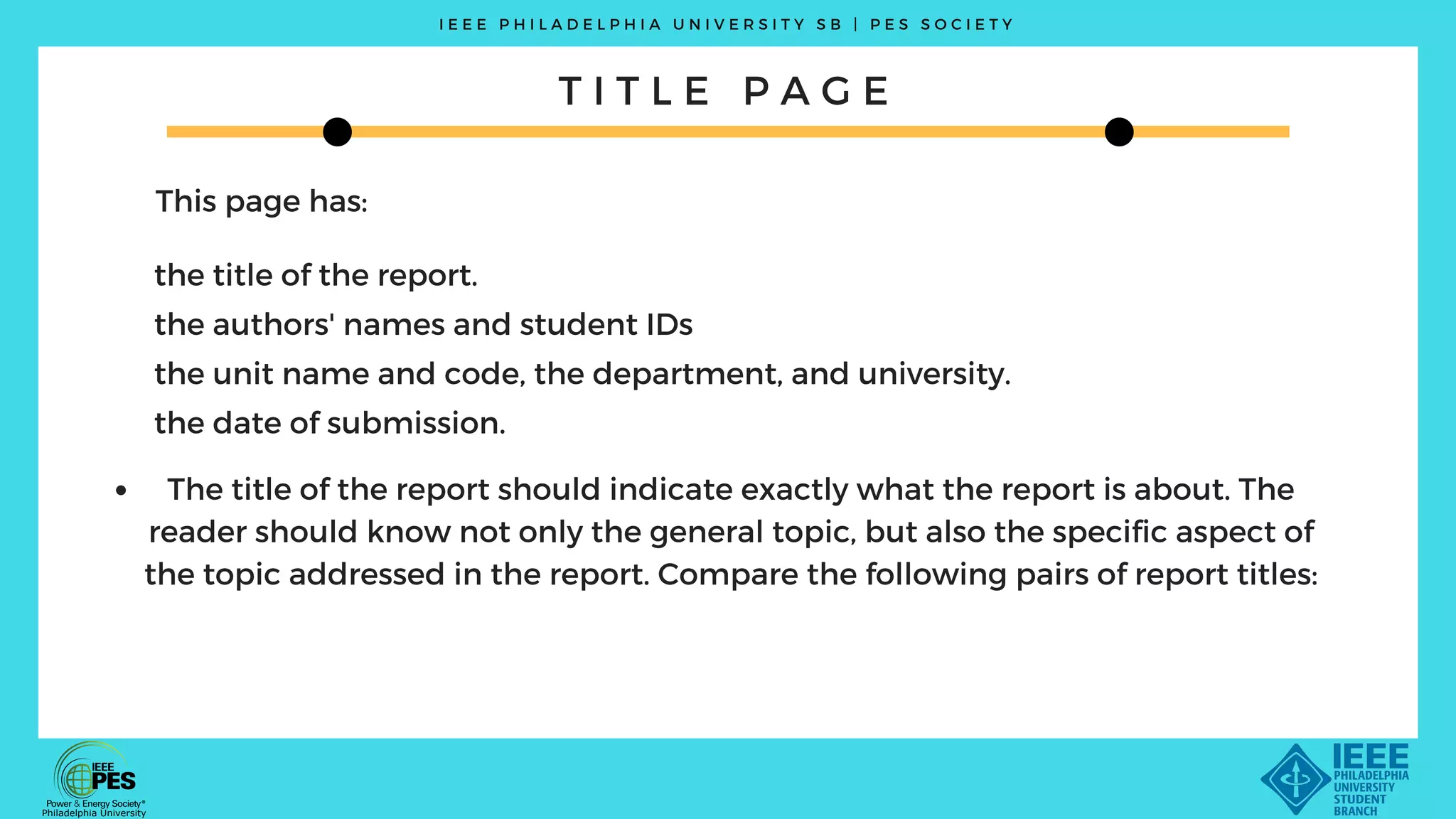The document provides guidance on writing an engineering technical report, including sections on the purpose of technical reports, basic report structure, and guidelines for key sections like the introduction, body, and conclusion. The report structure typically includes a title page, summary, table of contents, introduction, body, and conclusion. The body should be logically organized and include relevant figures, tables, and justification of approaches. The conclusion summarizes key findings and recommendations.

























